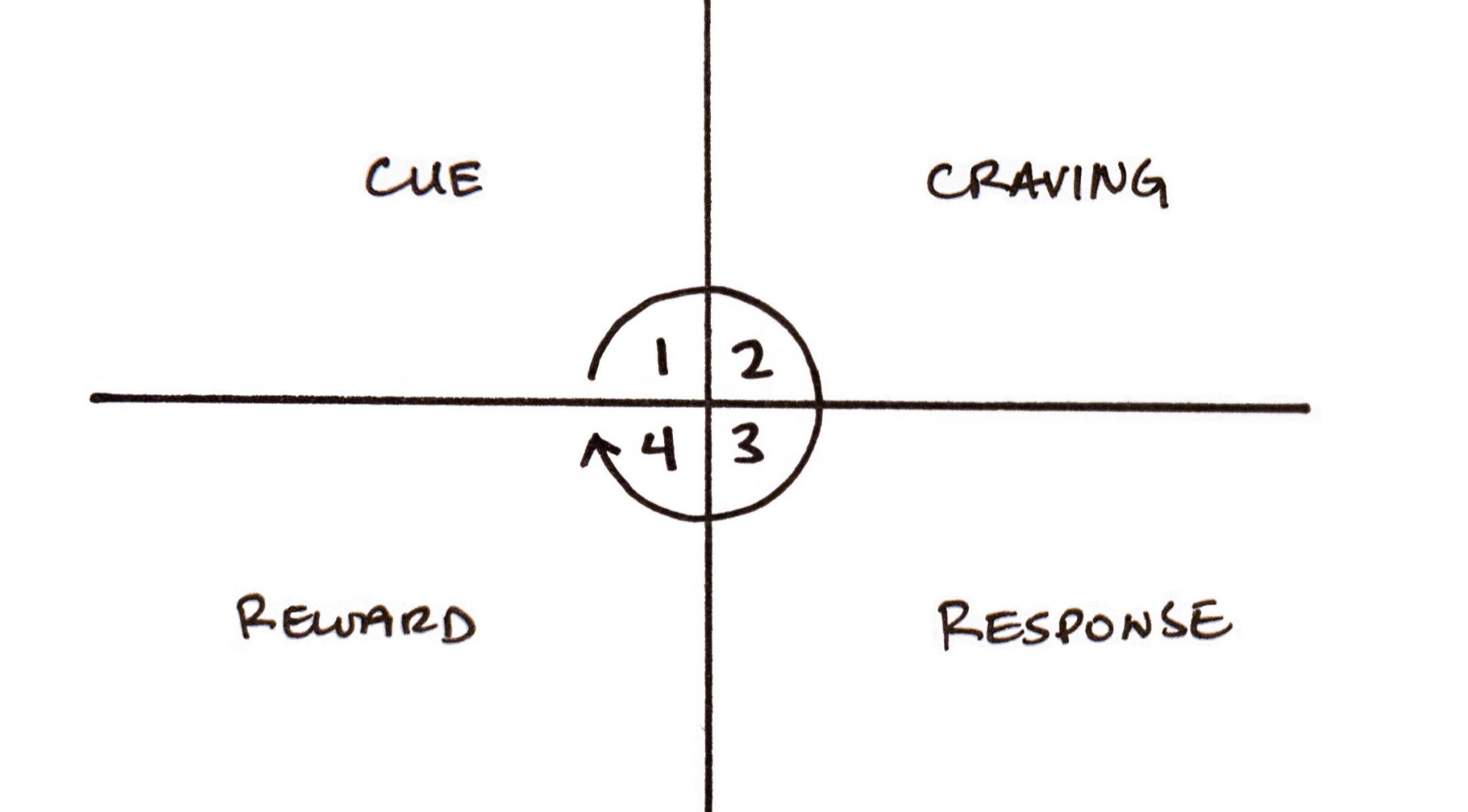
The blog of Affordances LLC.
How Habits Will Affect Your “Return To Office”
Employees working from home are operating with new sets habits. Breaking them would be difficult.
For over two years many knowledge workers have been working from anywhere, but mostly from home. They’ve worked from couches, from kitchen tables, from islands, and in some cases - resorts. Now that the pandemic has begun to wain, employers are finally setting return to office dates again. However, they may hit an unexpected snag in the form of preexisting habits.
How Habits Form
Habits are formed by the repetition of actions over time. A habit is actually a series of actions involving a cue, craving, response, and finally a reward.
Source: James Clear Atomic Habits
A real life example of this can be found in the Cinnabon franchise. They put their stores at the entry / exit of malls. You enter into the smell of Cinnabon and this creates a craving. By the time you’re on your way out the smell hits you again and you respond by just getting a “small” Cinnabon. You are rewarded with gooey goodness and a sugar rush. Unfortunately the more this happens the harder it will be to say NO to the Cinnabon.
Why It’s So Hard To Break Existing Habits?
Existing habits are extremely hard to break. Anyone how’s tried to give up sweet treats, or try dry January knows how hard it is to change the way you do things. This extends to all sorts of habits, including where and how we work. Normally we just call this our “routine.” Over time habits form grooves of sorts in our brains that make them extremely hard to break.
Many of us have been forming a new habit of working from home (or whoever) for the past two years. In habit formation world that’s a very long time. The habit of working from home and not going to the office is carved into our brains.
What To Do About Your “Return To Office” Plans
As James Clear outlines in his recent book “Atomic Habits,” in order to create a new habit you have to make it obvious, attractive, easy, and satisfying. To break a habit you have to make it invisible, unattractive, difficult, and unsatisfying.
In the context of going to the office, it is not just one habit, but a larger “stack” of habits that take us from getting ready in the morning to getting out the door, and finally into the office setting. Breaking one habit can be hard enough but breaking multiple stacked habits is extremely difficult.
When companies order people back to the office without input and set a “return to office” date it triggers something called reactance. Reactance is a human tendency to react to being told what to do by maintaining our personal freedom by doing the opposite. So you tell someone to return to “work” and they say “I resign.”
Unfortunately, this is likely to put a dent into many companies return to office plans as they exist today. To make working from home unattractive or difficult would quickly create a toxic culture situation on the part of the company. This could create bad feedback if those employees who feel mistreated decide to leave due to a negative culture experience. So, what can employers do to avoid these issues?
Taking a People First Strategy
Companies that want to lead the future of work are better off focusing on building new habits vs breaking existing ones. We encourage companies to engage in feedback sessions with employees before they make any decisions, and then begin planning at business unit levels for how / when they will gather intentionally moving forward. If you intentionally create a habit of bringing people together for a specific reason and slowly repeat over time, employees will naturally form a habit of coming together.
Building new habits is always going to be easier than breaking existing / replacing existing ones. In a world where there’s 3.9 % unemployment and employees largely have the option to walk away into a situation more aligned with their current habits, taking a people first strategy will enable more successful outcomes.
Want to know more? Feel free to reach out to us directly or find us here or on LinkedIn.

